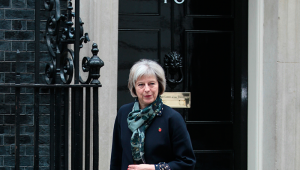Housing hit the headlines once again at the Conservative party conference – but this year things were different.
For the first time in several years, home ownership wasn’t the only game in town.
Yes Theresa May promised to ‘reignite home ownership’ with an extra £10 billion for help to buy, but the centrepiece of her speech was the announcement of new investment in affordable housing – and most importantly, that at least some of this money will be used to build new homes fo social rent.
The government also announced a new rent settlement for social housing, following the four-year rent cut introduced by George Osborne in 2016. Increases to social housing rents will be limited to the Consumer Price Index (CPI) plus 1% for five years from 2020.
On both counts, the devil will be in the detail – and I’ll get to that in a moment – but the speech marked a significant and welcome change in approach, which not many people would have predicted even just a few months ago.
CIH has consistently called on the government to invest more in genuinely affordable homes for rent.
Social rents, which are significantly cheaper than market rents and the ‘affordable rent’ introduced by the coalition government in 2010, are the only truly affordable option for many people on lower incomes. The recognition that we need more of these homes is a vital step forward.
It was also encouraging to hear that Theresa May agrees councils have a central role to play in building the homes we need at prices people can afford.
However, we need to see just how many of new homes will be delivered at the lowest social rents.
The number of homes for social rent funded by the government collapsed from 36,000 to just over 1,000 between 2010/11 and 2016/17.
Combined with the impact of right to buy, conversions to affordable rent and high value sales, we have forecast a potential loss of 250,000 social rented homes between 2012 and 2020.
Reversing this trend will be a significant task – how much of the extra £2 billion announced by the Prime Minister will be dedicated to building these kinds of homes?
The government’s press release suggested all of it. But Theresa May clearly said: “We will encourage councils as well as housing associations to bid for this money. And in those parts of the country where the need is greatest, allow homes to be built for social rent, well below market level.”
And how many will actually be built as a result? The government’s press release said the investment could supply “around 25,000 more homes for social rent over the course of Parliament” – a welcome increase, but one that will surely not be enough to have an enormous impact.
Government support for affordable housing remains dwarfed by its investment in the private market.
Before the conference, we analysed its housing budget up to 2020/21 – of a total of £41 billion, 79% was directed towards the private market, with the remainder going to affordable housing.
My colleague John Perry points out that Theresa May’s announcements (assuming the detail is confirmed in the Autumn Budget) take the total to £53 billion, with 80% going to private housing and 20% to affordable.
On top of the extra money for affordable housing, the new rent settlement should help get more homes built. It provides the stability and certainty landlords need to build more desperately-needed new homes and to invest in their existing homes and services for tenants.
But landlords and ministers will need to keep a close eye on rents to make sure they are genuinely affordable for people on lower incomes.
In our Building Bridges report we proposed that rents should not take more than a third of net earnings for people on below average income.
There was much to welcome in last week’s announcements and they are certainly an important step in the right direction, but ultimately we still need to do more if we are to finally build the number of truly affordable homes we need.





















